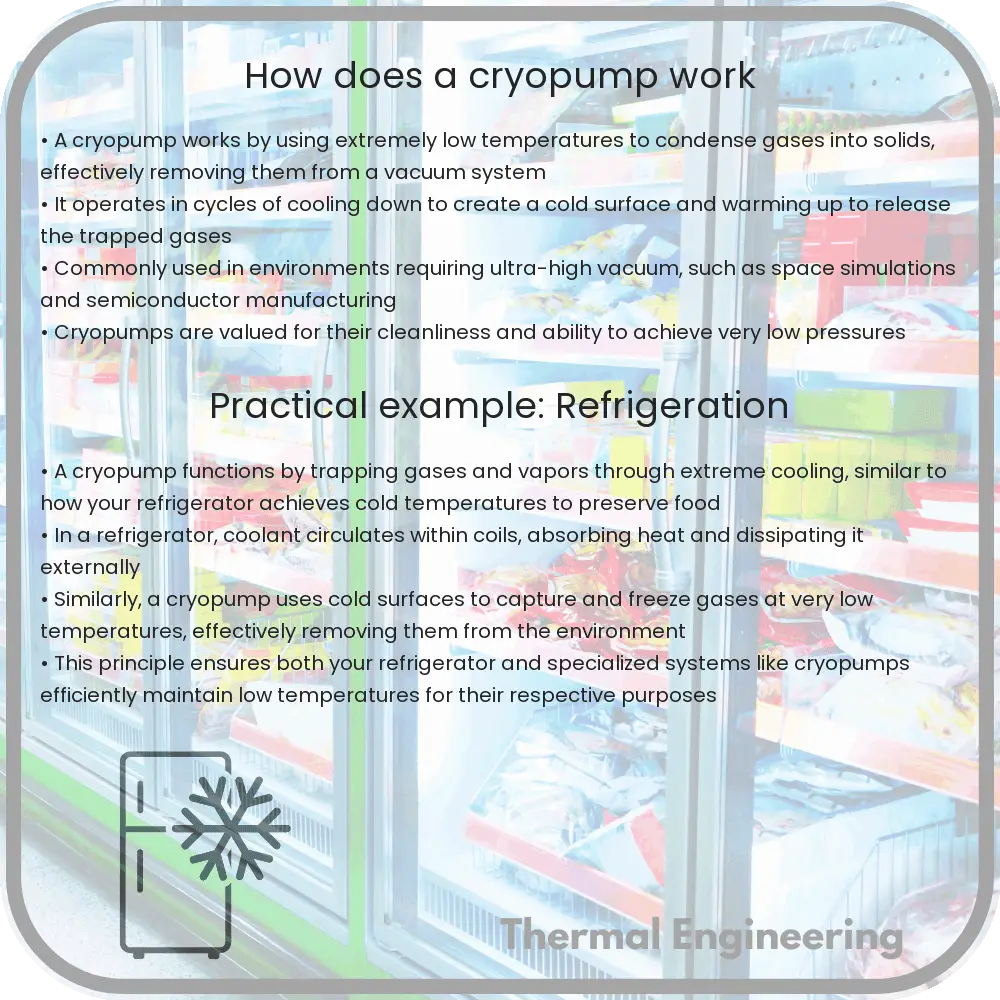Learn how cryopumps create ultra-high vacuums using cryogenic technology for scientific and industrial applications.

Understanding the Mechanics of a Cryopump
A cryopump is an essential tool in various scientific and industrial fields, utilized chiefly for creating ultra-high vacuum environments. This device operates on the principles of cryogenic technology, using extremely low temperatures to condense gases from the environment, thus effectively removing them to create a vacuum. Let’s dive into the workings and applications of a cryopump.
Principle of Operation
The basic operational principle of a cryopump is quite simple. It uses a cold surface, usually cooled by liquid helium or nitrogen, to freeze and trap gas molecules that are inside a vacuum chamber. The colder the surface, the more effective it is at condensing and trapping these molecules.
- Cooling System: The heart of the cryopump is its cooling system, which can reach temperatures as low as 10 K (-263.15°C) using helium and up to 77 K (-196°C) with nitrogen. These temperatures are crucial for the effectiveness of the pump.
- Adsorption: When gas molecules come into contact with the cold surface of the cryopump, they lose their kinetic energy rapidly and adhere to the surface in a process known as adsorption.
- Condensation: At the same time, other gases that are less prone to adsorption condense into a solid or liquid at these low temperatures.
- Exhaust Mechanism: Once the surface is saturated with gas molecules, the cryopump needs to be regenerated. This involves warming the surface to release the trapped gases, which are then expelled from the system.
Types of Cryopump
There are mainly two types of cryopumps:
- Bath Cryopumps: These rely on a bath of cryogenic fluid to cool a thermal shield and cold surfaces within the pump. They are generally more robust and suitable for continuous operation.
- Refrigerated Cryopumps: Utilizing a closed-cycle refrigerator, these pumps cool the surfaces directly. They are more complex but offer ease in temperature control and regeneration processes.
Applications of Cryopumps
Cryopumps are widely used in several fields due to their ability to achieve and maintain a high vacuum. Common applications include:
- Semiconductor Manufacturing: Cryopumps provide the clean, ultra-high vacuum environment necessary for the production of semiconductors.
- Space Simulation Chambers: Mimicking the vacuum of space requires the removal of all air molecules, a task ideally suited for cryopumps.
- Particle Accelerators: Cryopumps are used to maintain the vacuum needed for the unimpeded travel of particles in accelerators.
- Freeze Drying: In pharmaceuticals and food preservation, cryopumps are used to extract moisture content under vacuum, enhancing the freeze-drying process.
Advantages and Disadvantages
While cryopumps are beneficial for certain applications, they also come with their own set of advantages and disadvantages.
- Advantages:
- High pumping speed for all gases.
- Creates ultra-high vacuum conditions efficiently.
- No contamination of the vacuum with pump oils or fluids.
- Disadvantages:
- Requires periodic regeneration to release trapped gases.
- High initial and operating costs due to cryogenic materials and technology.
- Limited to environments where the introduction of vibration is not a concern (due to the operation of cryogenic compressors).
Overall, the cryopump is a sophisticated device that plays a critical role in applications requiring stringent vacuum conditions. By understanding its operation, types, and uses, engineers and technicians can better harness this technology to suit specific industrial and research needs.